As you plan your wedding, you may have noticed that there are so many traditions to choose from. There are the common ones, such as the bouquet toss and daddy-daughter dance. But did you know that there are some traditions specific to Catholicism that you can have at your Catholic wedding? These traditions are not only beautiful ways to honor Our Lord/Our Lady, but they also show your guests just how important the Catholic Faith is to you as a couple. I’ve discovered these traditions over some time as a Catholic wedding photographer, and I wish I knew about them when I got married! That’s why I wanted to share them with you, so that you can learn more and (hopefully) inspire you to choose a tradition to incorporate for your wedding day!
The Marriage Crucifix
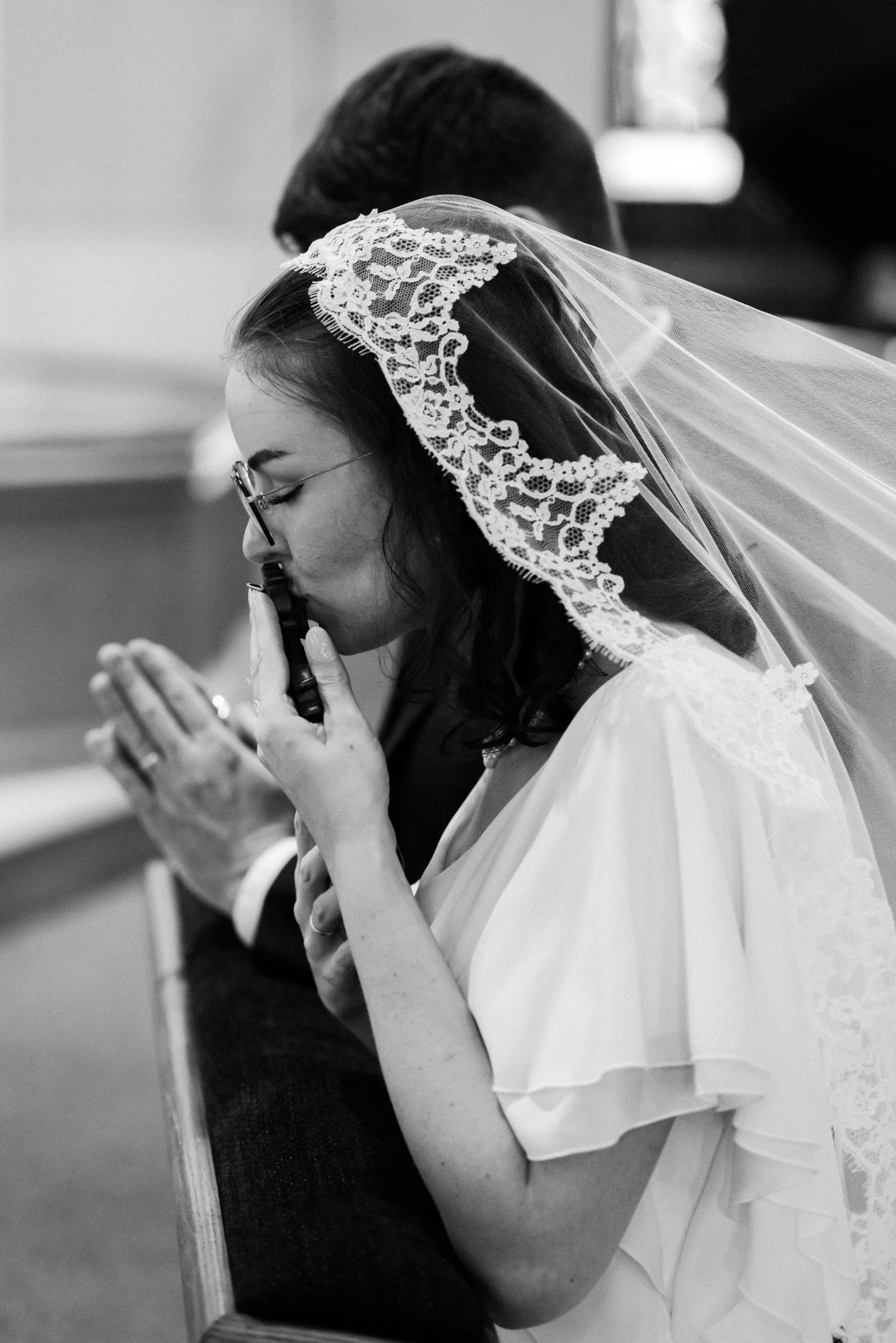
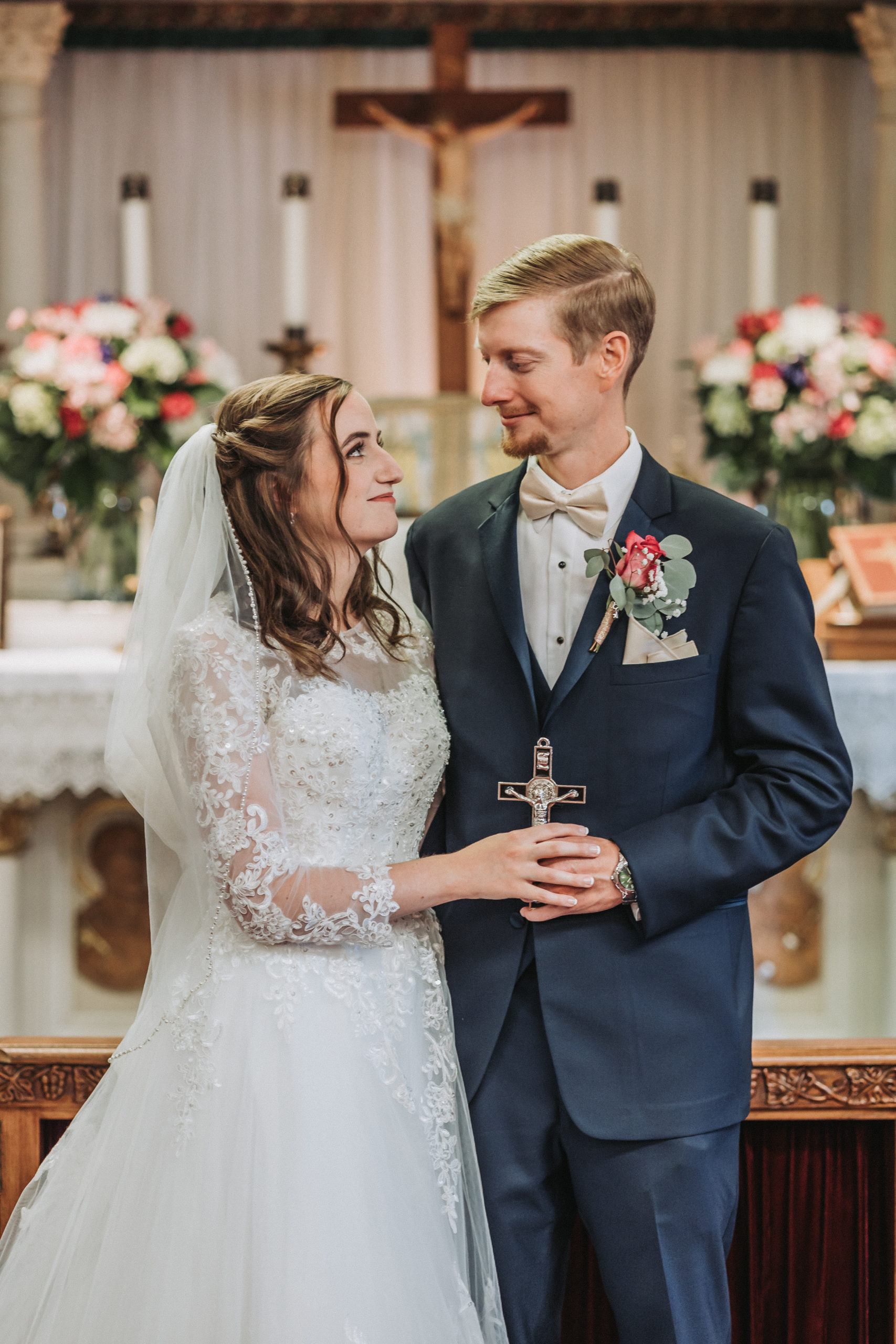
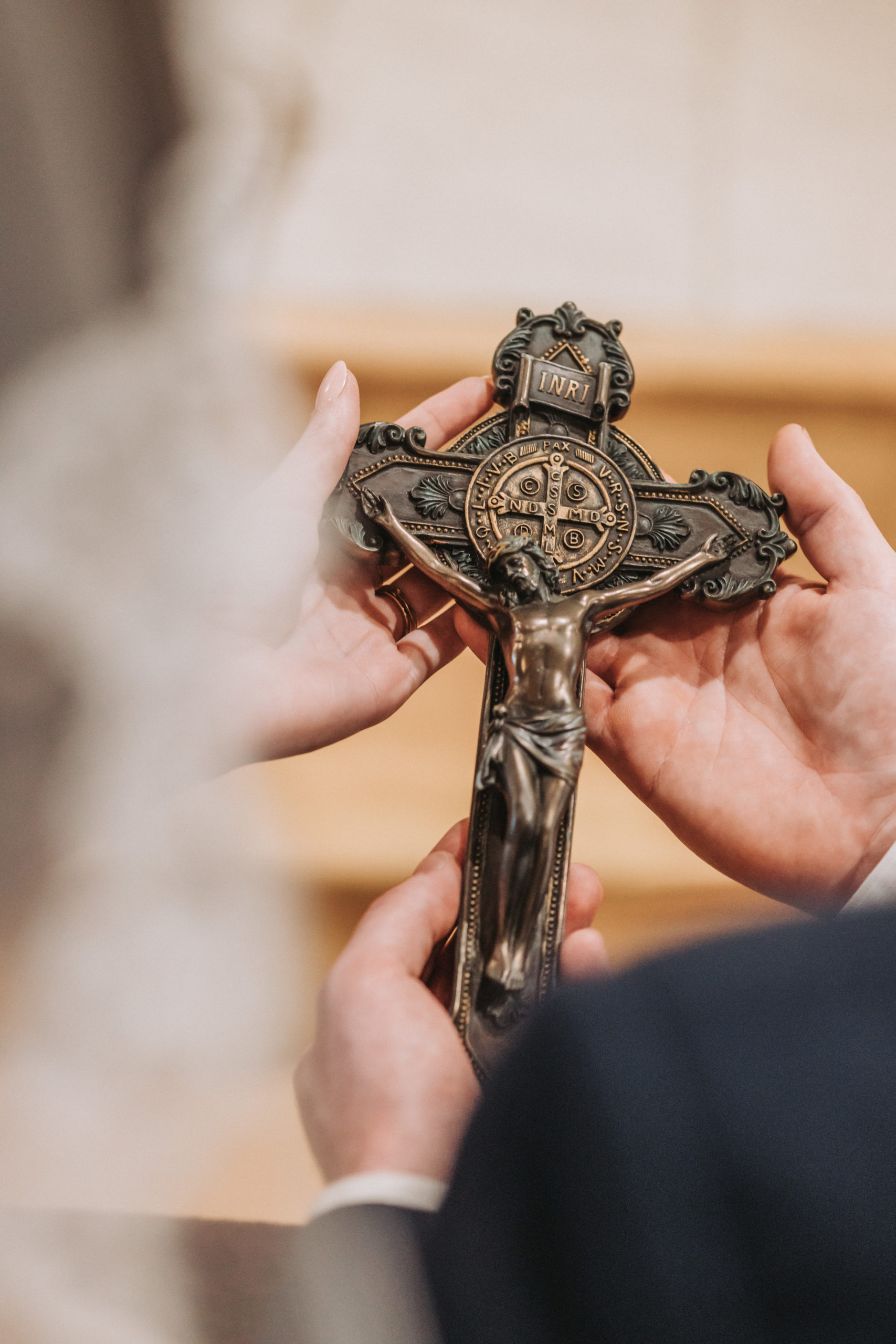
The Marriage Crucifix is a Catholic wedding tradition that traces back to a small town in Bosnia-Herzegovina. Although it is a small town, it is reported to be the only town that has a 0% divorce rate. It is believed that the “secret” to this divorce rate is the fact that they make Christ the center of their marriage.
In this tradition, the couple approaches the altar. The priest says to them, “You have found your cross. And it is a cross to be loved, to be carried, a cross not to be thrown away, but cherished.” Then, he blesses the crucifix. During the exchange of vows, the groom holds the crucifix with his right hand, and the bride places her right hand on top the crucifix, which is such a beautiful symbol of Christ at the center of their relationship. Instead of kissing one another, they actually kiss the cross.
What do you do with the crucifix afterward?
After the wedding day, the crucifix can be hung anywhere in your home. I highly recommend making it a focal point, by placing it in a prominent area that you (and any children that you’re blessed with) can always look to. By placing it in a focal area, you are constantly reminded of the purpose of your marriage, and the vows you took during this beautiful sacrament. It is also a great way to open up conversation to your non-Catholic friends!
Where do you get this crucifix?
The marriage crucifix doesn’t need to be any particular crucifix or made of a specific material. It can be a crucifix that is important to either of you (perhaps one that you received for your baptism or First Holy Communion), or a crucifix that is important to both of you (maybe one from the town where you got engaged, or one that is in the church bookstore where you’ll be getting married). If your parents or grandparents did this tradition during their wedding ceremony, you could continue the tradition by using that same one!
The Wedding Lasso/Lazo
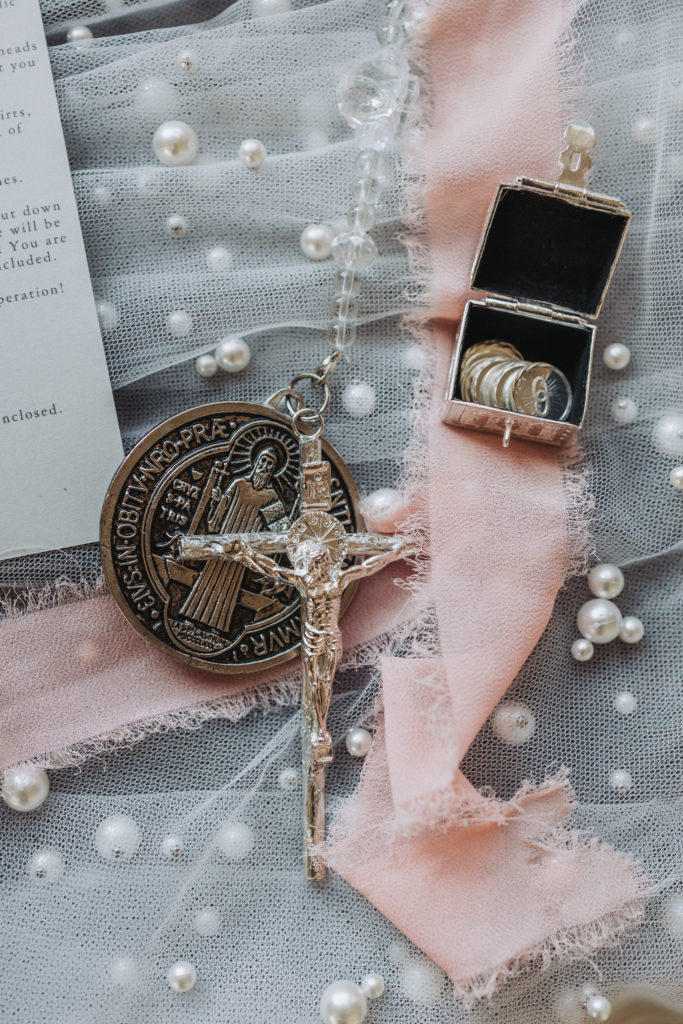
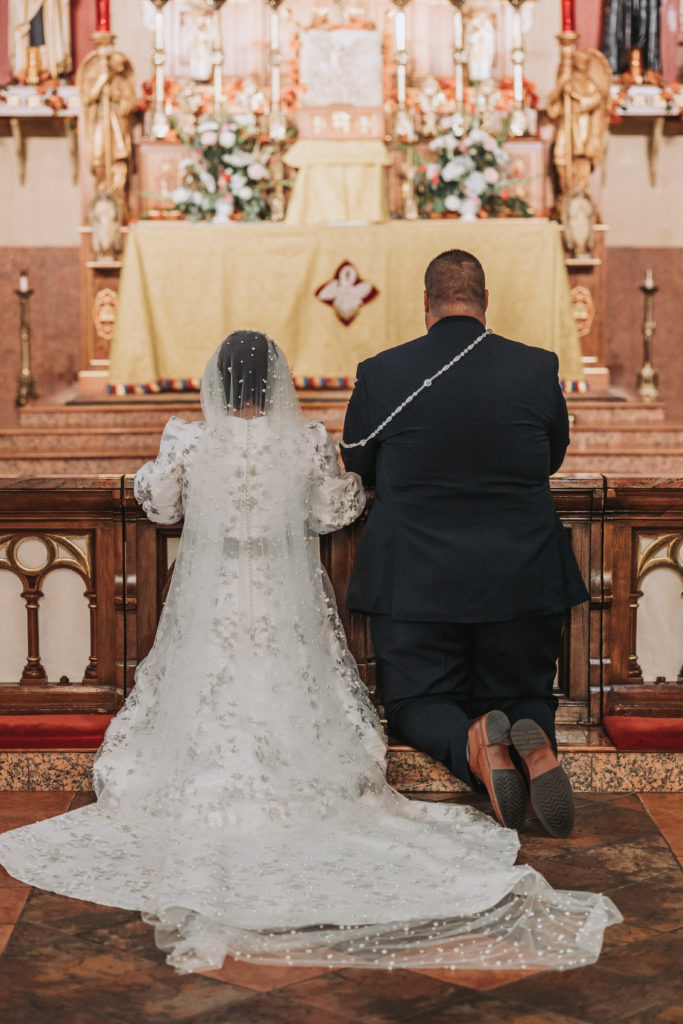
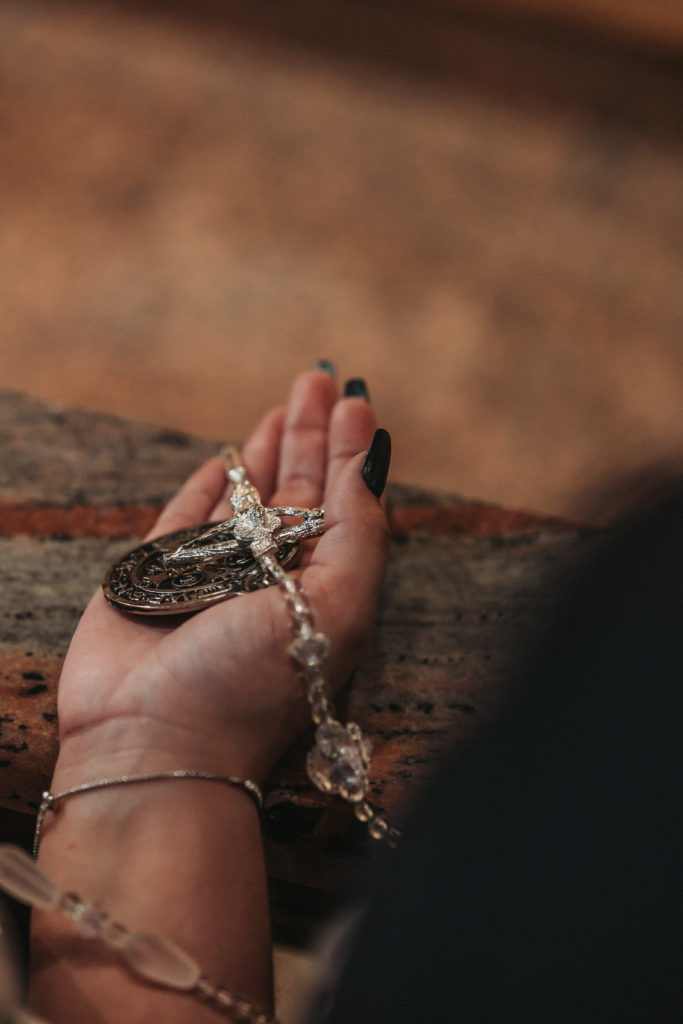
The Wedding Lasso is a Catholic wedding tradition that is rooted in Mexican, the Philippines, and other Latin communities. It is considered to be a unity ceremony that is performed after the exchange of vows. The lasso is made of two large rosaries, linked together with one crucifix. The rosary is placed over the bride and groom in a figure-eight form (the infinity symbol), which represents the eternal bond you are creating in the eyes of God. It is traditionally placed on the couple by the bride’s godparents or by the priest after the exchange of vows and rings. This is a beautiful tradition to include, especially if you have a strong devotion to Our Lady and the rosary.
What do you do with the lasso afterward?
As mentioned above, the lasso is essentially two large rosaries joined at the center. This is a great item to put in any area of your home. Similar to the marriage crucifix, I recommend putting it in a focal area of your home, like above a fireplace, in your living room (perhaps where you will be praying the family rosary), or above your bed.
Where do you get the lasso?
There are several sellers on Etsy that make wedding lassos (even custom-made ones that could include beads of your wedding colors)! Traditionally, the godparents actually get and gift this wedding lasso rosary for the couple, but that is not required.
The Nuptial Veil
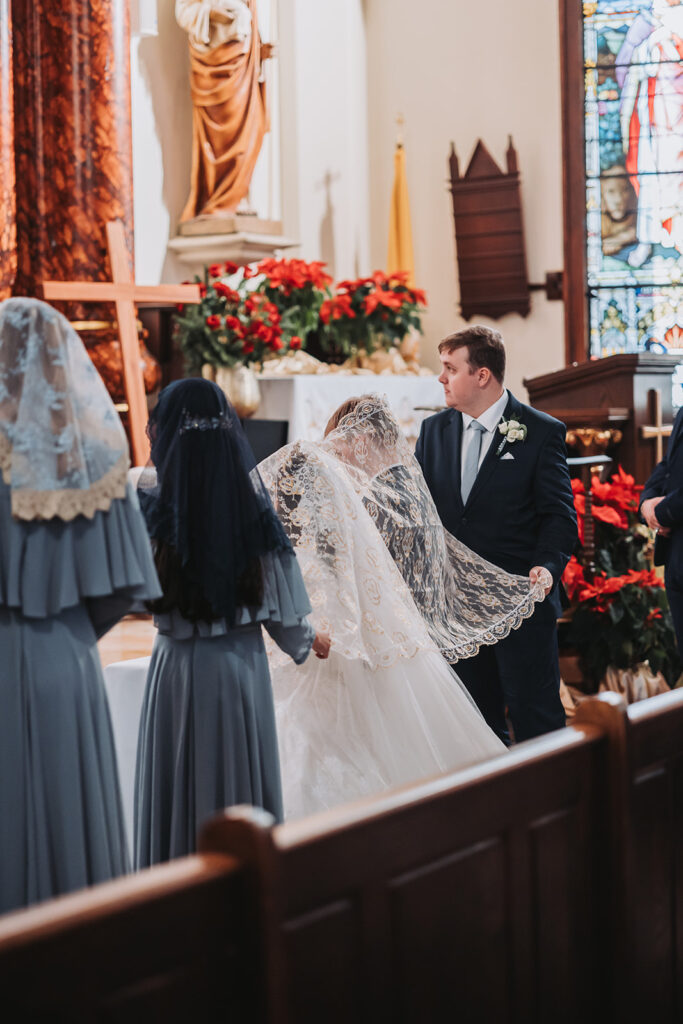
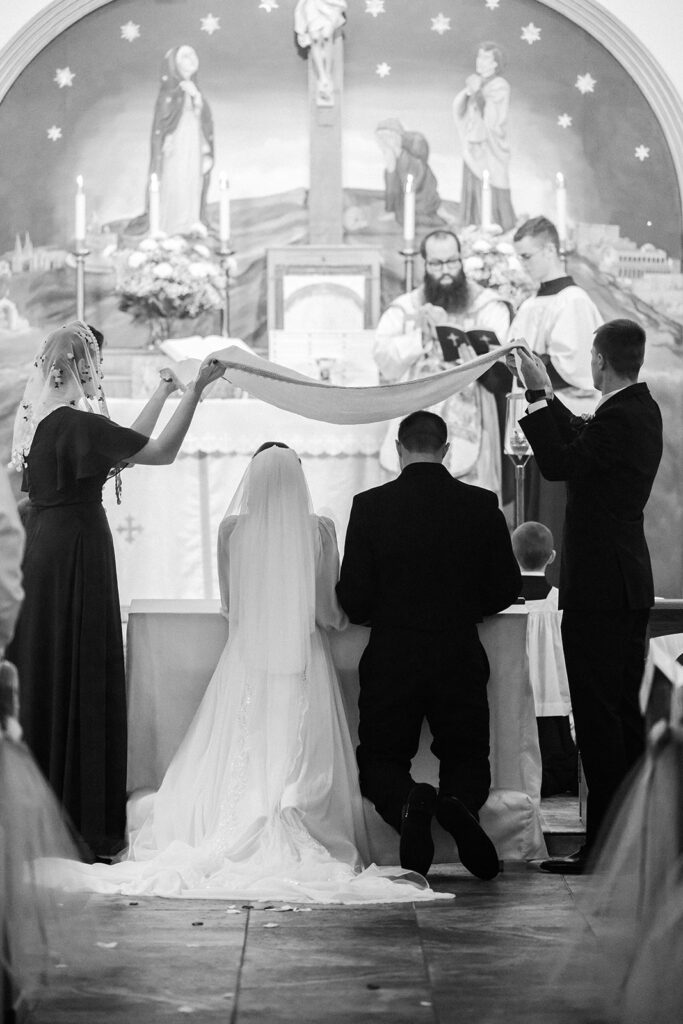
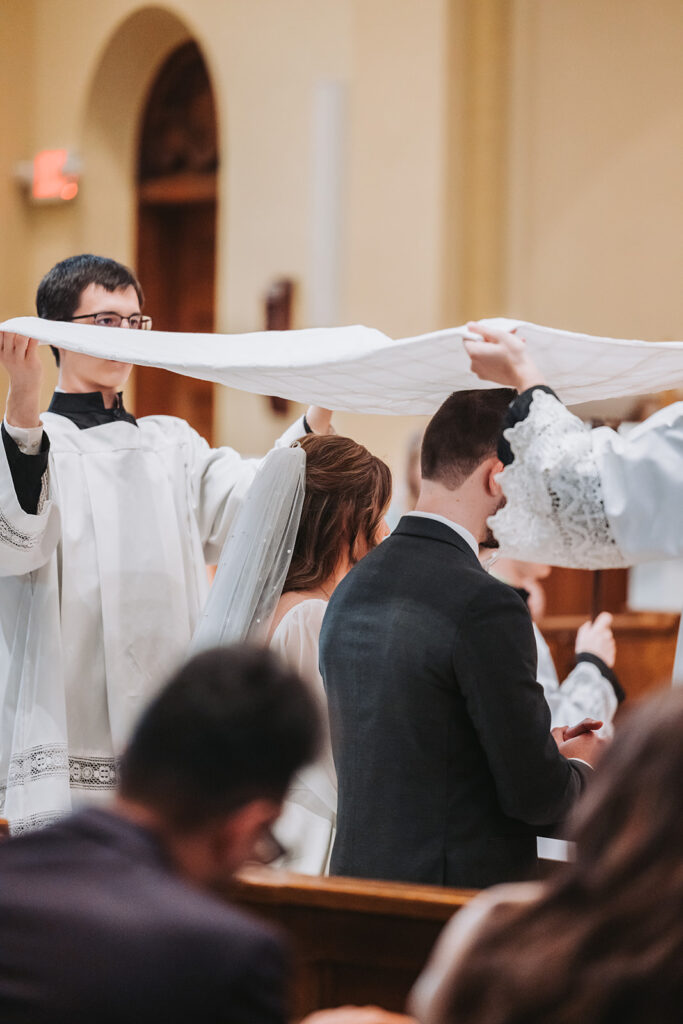
This tradition is SO beautiful! The Nuptial Veil is also called the Care Cloth and it is actually traced back to the 5th century. It is a tradition that occurs during the nuptial blessing in Mass. A white cloth is held above the bride and groom (it is held by the maid of honor and best man), and the cloth represents the bright white cloud; the cloud is the manifestation of the glorious protection of God.
What kind of cloth does it need to be?
As far as I know, it doesn’t have to be a particular type of cloth. From what I have captured, it is often either a linen fabric or a lace. You could probably find these online or on Etsy, or you could go to a fabric store and buy some lace to use for this tradition!
What do you do with this cloth afterward?
It may seem a little more challenging to figure out what to do with this cloth after your wedding day. However, there are still lots of ideas for the nuptial veil! For one, you can make a memory box from your wedding, and use the cloth as a “background” the memory box. In this box, you could include so many elements from your wedding day (such as: programs, holy cards, preserved flowers, etc). Another option is to save this cloth in a safe location and use it for future children’s sacraments (possibly using it as part of a baptism dress, or save for a future child’s wedding day, etc). It would be beautiful to see this tradition go through multiple generations of families, and especially by using the same cloth if possible!
Overview
I hope all of these traditions have been helpful for you to learn more about the beautiful ways you can showcase and honor your Catholic faith on your wedding day! None of these traditions are required during the sacrament, but I highly recommend choosing one (or multiple) that really resonates with you. I truly believe that the world needs to see the beauty of Catholicism, and this is a lovely way to show how important your faith is to you! And, as you become a married couple, what better way to start off your married life than by establishing a tradition for your new family, and one that honors God?
Be the first to comment